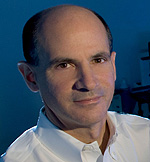Scientists discern signatures of old versus young stem cells
/in News, News 2013, Uncategorized /by sjungers BY BRUCE GOLDMAN
BY BRUCE GOLDMAN
A chemical code scrawled on histones — the protein husks that coat DNA in every animal or plant cell — determines which genes in that cell are turned on and which are turned off. Now, Stanford University School of Medicine researchers have taken a new step in the deciphering of that histone code.
In a study published June 27 in Cell Reports, a team led by Thomas Rando, MD, PhD, professor of neurology and neurological sciences and chief of the Veterans Affairs Palo Alto Health Care System’s neurology service, has identified characteristic differences in “histone signatures” between stem cells from the muscles of young mice and old mice. The team also distinguished histone-signature differences between quiescent and active stem cells in the muscles of young mice.
